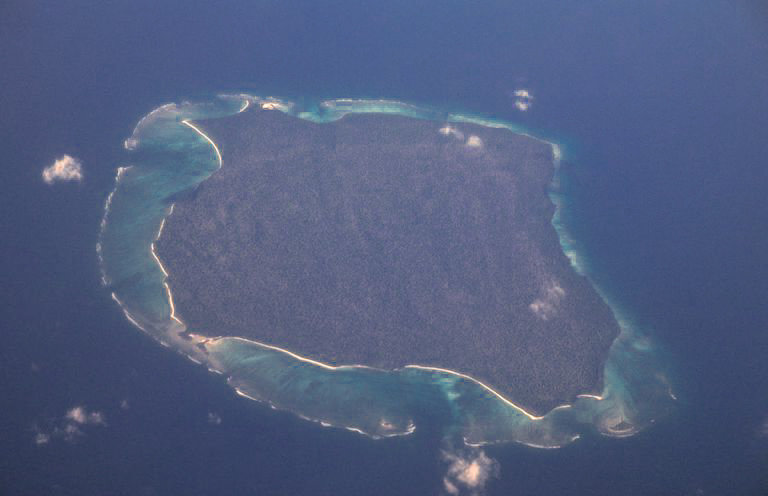There are places and sites we’d love to visit but simply cannot. Some have vanished due to human folly or nature’s whims, while others—more commonly—have become inaccessible because they’re now located in war zones or regions where tourism is strongly discouraged. This doesn’t necessarily mean they’re permanently closed or that circumstances will never change, but for now, they remain off-limits.
Today we’re heading to a small island not far from Myanmar that, despite its proximity, belongs to India: North Sentinel Island.
Where is North Sentinel Island?
North Sentinel is an island in the Indian Ocean, specifically in the Bay of Bengal. It’s part of the Andaman Islands archipelago, which belongs to India. Covered in forest with its highest point barely reaching 328 feet (100 meters) above sea level, and lacking any particular resources, the island isn’t very large at just 23 square miles (60 km²).
The location has always been home to an indigenous population, the Sentinelese, whose numbers are currently estimated at fewer than 200 people living in complete self-sufficiency while rejecting all contact with the outside world. North Sentinel Island has been officially off-limits to everyone—including Indian authorities—for years.
Why Can’t We Visit North Sentinel Island?
Originally from Africa, the Sentinelese are known for their isolated way of life, far removed from the modern world. It wasn’t until the late 19th century that first contact was truly established by a British expedition, then nothing more until the 1960s-70s when the Indian government and some scientists took interest in the island. These efforts met with little success, as every attempt to approach was unsuccessful, sometimes even met with volleys of arrows from the Sentinelese. In 1996, the Indian government officially abandoned all attempts to make contact with the island’s inhabitants.
Since then, the Indian Coast Guard has protected North Sentinel from any outside presence. And when that’s not enough, the Sentinelese attack those who approach their island—two illegal fishermen were killed this way in 2006. Not to mention the evangelical missionary whose story made headlines in 2018. Wanting to bring what he considered the “last outpost of Satan” into the fold, he landed on the island only to be killed by its inhabitants.
This clearly signals—or reminds us—that the Sentinelese have chosen to live among themselves, away from the outside world. And that choice must be respected.

